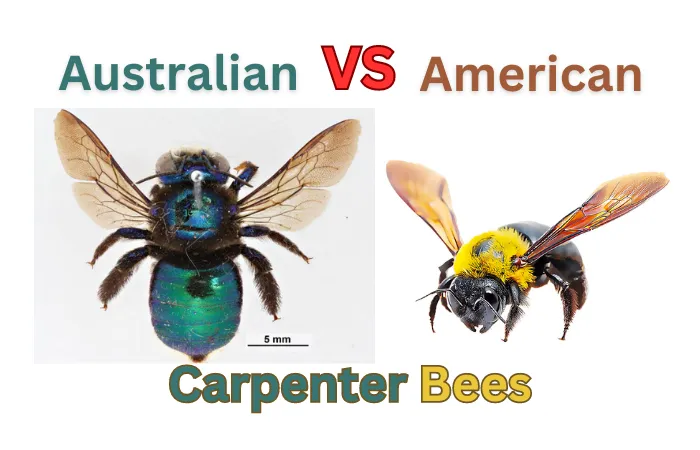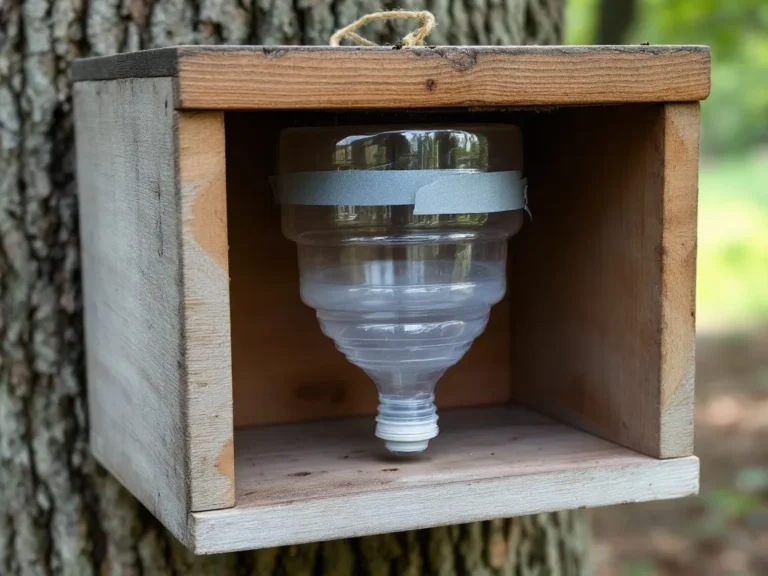Carpenter bees are remarkable creatures found across the globe, known for their wood-boring habits and important role in pollination. While they share some common traits, carpenter bees from different regions can vary significantly in appearance, behavior, and habitat. Two prominent examples are the Australian carpenter bee and the American carpenter bee.
In this article, we’ll explore the key differences between these two types of carpenter bees, focusing on their physical characteristics, behavior, nesting habits, and ecological roles. Understanding these differences can help in identifying and managing these bees, whether you’re dealing with them in your garden or simply curious about these fascinating insects.
1. Overview of Carpenter Bees: A Global Perspective
a. What Are Carpenter Bees? Carpenter bees belong to the family Apidae and the subfamily Xylocopinae. Unlike honeybees, which live in colonies, carpenter bees are solitary insects. They derive their name from their habit of boring into wood to create nests, where they lay their eggs and store food for their larvae.
b. Global Distribution: Carpenter bees are found worldwide, with different species adapted to various climates and environments. The Australian and American carpenter bees are among the most studied due to their distinct characteristics and behaviors.
2. The Australian Carpenter Bee (Xylocopa aeratus and Xylocopa bombylans)

a. Appearance:
- Size: The Australian carpenter bees, particularly Xylocopa aeratus and Xylocopa bombylans, are large and robust, typically measuring around 0.7 to 1 inch in length.
- Coloration: These bees are known for their striking metallic colors. Xylocopa aeratus has a brilliant metallic green or blue sheen, while Xylocopa bombylans is covered in dense yellow-orange hairs, giving it a bumblebee-like appearance.
- Body Structure: They have a relatively hairless abdomen, which is shiny and can be black or metallic in color.
b. Behavior:
- Nesting Habits: Australian carpenter bees prefer to nest in dead wood, including tree trunks, branches, and even wooden structures. They bore perfectly round holes into the wood, creating tunnels where they lay their eggs.
- Pollination: These bees are vital pollinators in the Australian ecosystem, particularly for native plants. Their large size allows them to access flowers that other pollinators might not reach.
- Temperament: Australian carpenter bees are generally not aggressive and rarely sting unless provoked.
c. Habitat:
- Geographic Range: These bees are primarily found in Australia, with Xylocopa aeratus common in eastern regions and Xylocopa bombylans more widespread across the continent.
- Preferred Environment: They thrive in warm, temperate climates and are often found in gardens, forests, and woodlands.
3. The American Carpenter Bee (Xylocopa virginica)

a. Appearance:
- Size: The American carpenter bee, specifically Xylocopa virginica, is also large, with adults ranging from 0.75 to 1 inch in length, similar to its Australian counterpart.
- Coloration: Xylocopa virginica has a black body with a shiny, hairless abdomen. The thorax is covered with yellow or white hairs, giving it a somewhat fuzzy appearance.
- Body Structure: The black, glossy abdomen and the hairy thorax are distinctive features that help differentiate it from bumblebees.
b. Behavior:
- Nesting Habits: American carpenter bees are known for boring into softwoods like pine, cedar, and redwood. They create intricate tunnel systems within the wood to lay their eggs and store food.
- Pollination: Like Australian carpenter bees, the American species are essential pollinators. They are particularly important for crops and flowers that require large pollinators to access their nectar.
- Temperament: These bees are generally docile but can become territorial around their nests. Males are often seen hovering near nesting sites, though they cannot sting.
c. Habitat:
- Geographic Range: Xylocopa virginica is widely distributed across the eastern United States and southern Canada. They are most commonly found in gardens, orchards, and wooded areas.
- Preferred Environment: They favor temperate climates and are frequently encountered in suburban and rural areas where wooden structures provide ideal nesting sites.
4. Key Differences Between Australian and American Carpenter Bees
a. Appearance:
- Coloration: The most noticeable difference is the coloration. Australian carpenter bees, especially Xylocopa aeratus, are known for their vibrant metallic colors, whereas the American Xylocopa virginica has a more subdued black and yellow appearance.
- Hair Density: Australian carpenter bees like Xylocopa bombylans have a dense covering of hairs, giving them a bumblebee-like look, while American carpenter bees have a shinier, more hairless abdomen.
b. Nesting Preferences:
- Wood Type: While both species bore into wood, American carpenter bees often target softwoods commonly used in construction, making them a concern for homeowners. Australian carpenter bees also bore into wood but are less likely to target human structures.
- Nest Structure: The nesting structure of American carpenter bees is more complex, with multiple tunnels branching out from the main entrance. Australian carpenter bees tend to create simpler nests.
c. Geographic Distribution and Habitat:
- Location: The most obvious difference is their geographic location, with Australian carpenter bees found primarily in Australia and American carpenter bees in North America.
- Climate Adaptation: Australian carpenter bees are adapted to a wider range of climates within Australia, from temperate to more tropical regions. In contrast, American carpenter bees are more commonly found in temperate zones.
5. The Ecological Roles of Carpenter Bees
a. Pollination: Both Australian and American carpenter bees play a crucial role in pollination. Their large size and strength allow them to access and pollinate flowers that smaller bees might avoid. This makes them vital for the reproduction of various plants and crops in their respective regions.
b. Environmental Impact: While both species are beneficial pollinators, their wood-boring habits can be problematic. In the U.S., the American carpenter bee’s tendency to bore into softwoods used in construction can lead to significant damage over time. In contrast, Australian carpenter bees typically prefer dead wood and are less likely to damage human-made structures.
c. Conservation Status: Carpenter bees in both regions are generally not endangered, but habitat loss and the use of pesticides can threaten their populations. Conservation efforts focus on protecting their natural habitats and promoting awareness of their ecological importance.
6. Managing Carpenter Bees: Regional Considerations
a. American Carpenter Bees:
- Preventive Measures: To protect wooden structures from American carpenter bees, homeowners can paint or treat wood surfaces, seal existing holes, and use carpenter bee traps.
- Pest Control: In cases of severe infestations, professional pest control services can provide targeted treatments to eliminate the bees without harming other beneficial insects.
b. Australian Carpenter Bees:
- Protection Strategies: Although less likely to damage human structures, Australian carpenter bees can still be managed by sealing potential nesting sites and using natural deterrents.
- Conservation Awareness: Encouraging the conservation of these bees’ natural habitats can help maintain their populations while minimizing conflicts with human activities.
Final Toughts
Carpenter bees, whether in Australia or America, are a testament to nature’s diversity. While they share some common traits, their differences in appearance, behavior, and ecological roles highlight the unique adaptations of each species to their environment.
By understanding these differences, we can better appreciate the important roles these bees play in our ecosystems and take appropriate measures to manage their presence in our homes and gardens. Whether you’re in the U.S. or Australia, these remarkable insects are more than just wood-borers; they are vital pollinators contributing to the health and diversity of our natural world.
Resources
For further exploration into carpenter bees and their unique characteristics, here are some valuable resources:





